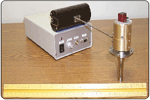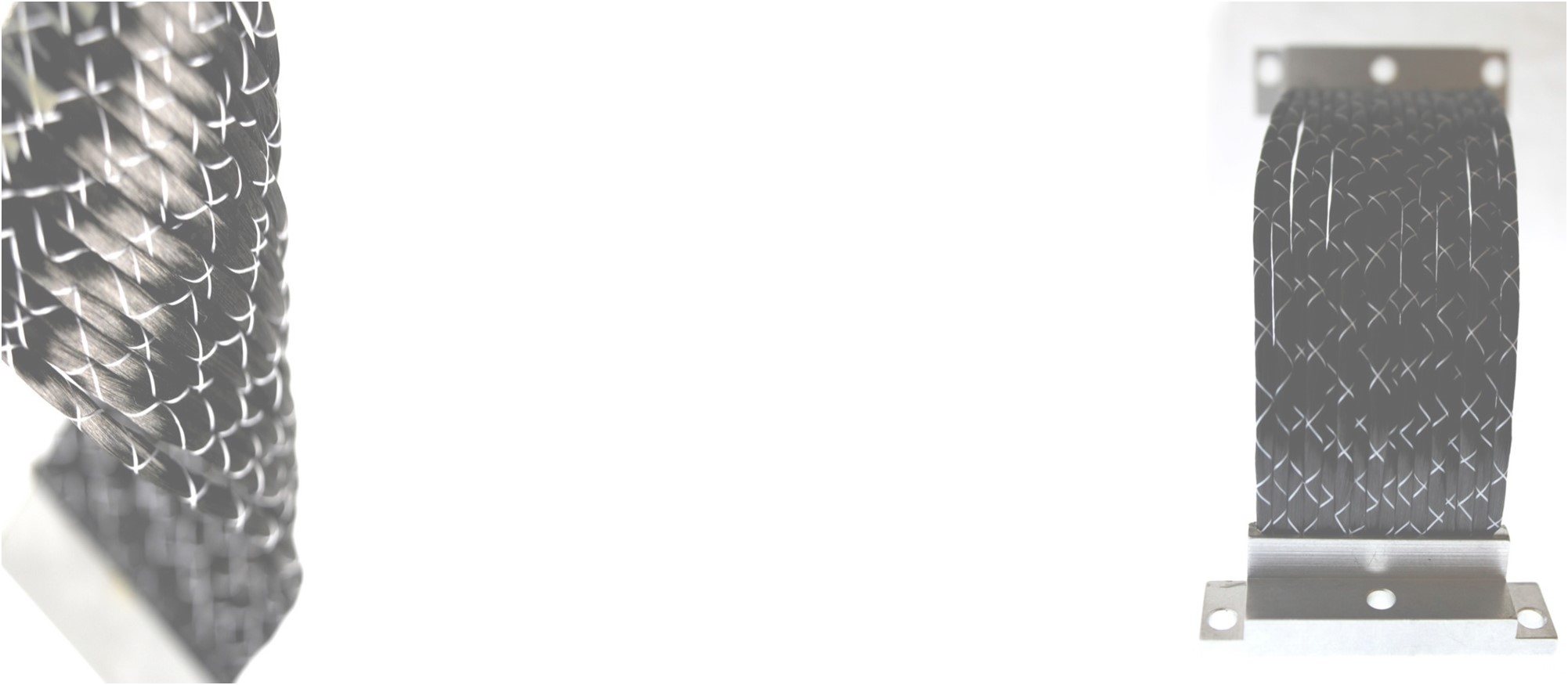Thermally Conductive Vibration Isolation System (TCVIS)
TCVIS for Cryocoolers (Graphite Fiber Thermal Straps)
With the increasing demand for high temperature cryoelectronics and sensitive spaceborne infrared imaging and detection systems, reliable mechanical cryocoolers have become an enabling technology. These cryocoolers share two undesirable characteristics, vibration and heat generation. Vibration causes deflections in attached structures, adversely affecting optical alignment and inducing spurious electrical signals. Heat generation increases cryocooler temperature, thereby, reducing efficiency, reliability, and lifetime.

Effective heat rejection has a significant effect on overall cryocooler performance by lowering the operating temperature of the compressor and expander. Providing the coldest gas temperature at the inlet of the regenerator results in optimum cryocooler efficiency. Lowering compressor operating temperature increases overall cryocooler reliability and lifetime, since cryocooler electronic failure rates and outgassing from wire and coil insulation increase significantly with temperature. The outgassed products migrate and condense on the colder portions of the cryocooler, i.e., the regenerator. After time, the accumulation of outgassed condensates impedes the flow through the regenerator, which adversely affects cryocooler performance, and can eventually cause failure.
Cryocooler vibration forces result from the moving masses in both the compressor and displacer and from the gas pressure wave in the displacer. These vibrations can produce a number of undesirable effects including:
- physical movement of pixels resulting in image smearing.
- misalignment of optical systems.
- motion of the signal wires in a weak magnetic field giving rise to induced currents.
- capacitive coupling of the signal wires to the ground plane.
- triboelectric charge generation of the signal leads.
- microstress induced piezoresistive voltages in some detector materials.
A vibration force of 2.5 milli-g at 50 Hz can cause movement of 0.25 µm; this movement is equivalent to the line spacing between pixels of the detector. Charge-coupled device (CCD) pixel saturation levels range from 10-6 to 10-10 J; this amount of energy can be generated by friction or motion effect of the conductive wires.
To address these issues, Technology Applications, Inc. and CSA Engineering have co-developed a Thermally Conductive Vibration Isolation System (TCVIS) for cryocoolers. This thermally conductive vibration isolation system integrates both thermal transport and vibration subsystems into a compact, lightweight assembly and fits between the cryocooler and detector dewar assembly. It incorporates six-axis vibration cancellation using compact, efficient electromagnetic actuators, force sensors, and passive isolators. This system has demonstrated a hundred-fold reduction in vibration at the fundamental frequency with significant reduction at multiple higher harmonics. The cryocooler is mounted to an aluminum flange that conducts heat from the cryocooler to a flexible graphite fiber thermal strap that connects to the heat rejection interface.
The TCVIS was tested at the National Instatute of Standards and Technology (NIST) and exceeded all of its requirements. At the cryocooler drive frequency, more than 40 dB reduction (100:1) in the axial direction and between 31 and 37 dB (37:1 to 70:1) in the two radial directions were demonstrated; the next four harmonics were reduced an average of 22 dB. The flexible thermal strap successfully attenuated vibration forces and maintained the cryocooler expander well within its recommended operating temperature.
Important Note: TAI’s GFTS Thermal Strap products are not made from Annealed Pyrolytic Graphite (APG), a product which is commonly used to make ridged, conductive structural components (made by Thermacore), and are far different from TAI's PGS and Graphene-based thermal straps, or graphite sheet-based straps offered by other suppliers or you may have attempted to make in-house.
Single Axis Vibration Isolator
 This single axis vibration isolator was derived from the six-axis Thermally Conductive Vibration Isolation System. This unit provides a simple, compact and inexpensive control solution for vibration isolation. This single axis vibration isolator was derived from the six-axis Thermally Conductive Vibration Isolation System. This unit provides a simple, compact and inexpensive control solution for vibration isolation.Axial reduction of:
|
